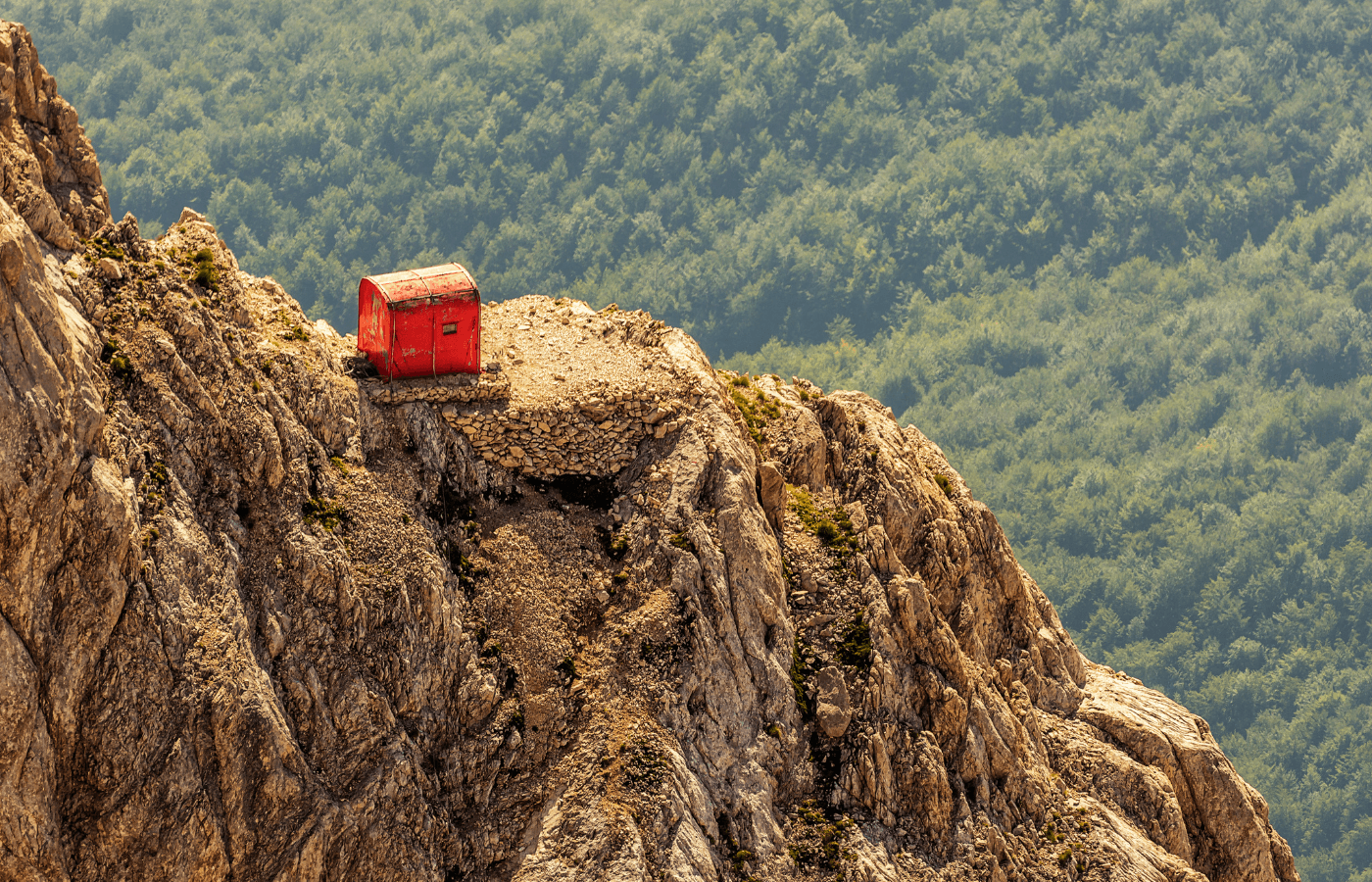12 Most Beautiful Rifugi in Abruzzo: Hiker’s Guide
Discover the best mountain huts in Abruzzo for stunning views, hiking adventures, and unforgettable alpine experiences.
When most people think of Italy’s mountains, the Dolomites often steal the spotlight. But tucked into the rugged heart of central Italy lies Abruzzo, home to the Apennines’ wild peaks, sweeping valleys, and some of the most beautiful rifugi mountain huts in Italy.
For hikers, cyclists, and anyone who loves being outdoors, exploring the most beautiful rifugi in Abruzzo isn’t just about finding shelter—it’s about soaking up panoramic views, tasting local mountain cuisine, and experiencing the warm hospitality that makes these huts so unforgettable.
Whether you’re after a multi-day hiking adventure or a cozy alpine meal with views, these rifugi (or a rifugio alpino for singular) are the perfect way to experience Abruzzo’s untamed landscapes.
Affiliate Disclaimer: Please note that some links on this blog are affiliate links, meaning I may earn a small commission if you make a purchase through them, at no additional cost to you.
Quick List of the Most Beautiful Rifugi in Abruzzo
- Rifugio Carlo Franchetti – Gran Sasso
- Rifugio Duca degli Abruzzi – Monte Portella
- Rifugio Montecristo – Campo Imperatore
- Rifugio Domenico Fioretti – Monte Corvo
- Rifugio Cima Alta – Prati di Tivo
- Rifugio 2027 Chalet Montefreddo – Ovindoli
- Rifugio Terraegna – Parco Nazionale d’Abruzzo
- Rifugio della Cicerana – Marsican Bear Country
- Bivouac Carlo Fusco – Monte Amaro
- Otium – Casa degli Escursionisti – Castrovalva
- Rifugio Fonte Tarì – Lama dei Peligni
- Rifugio Pischioli – Pennapiedimonte
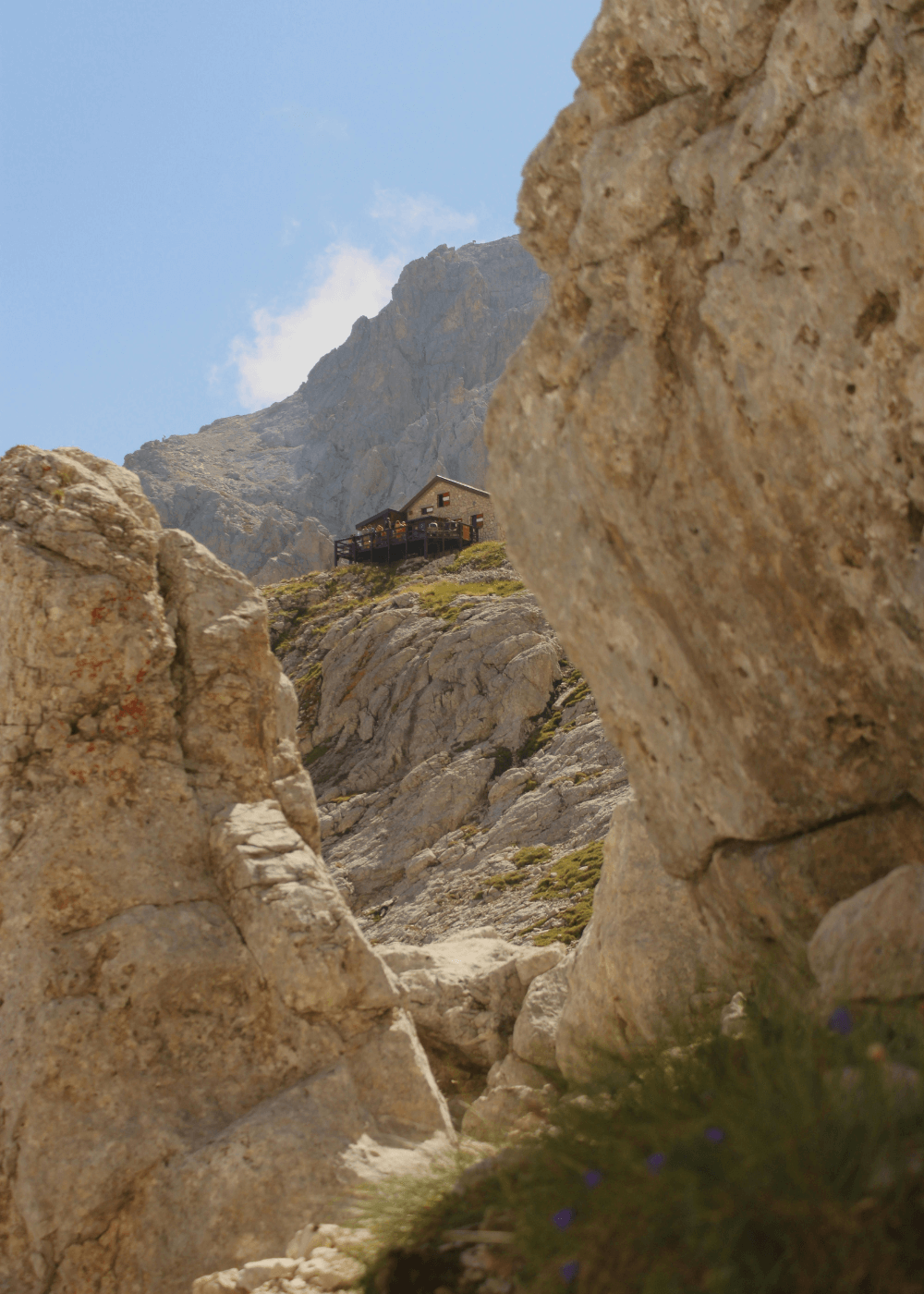
Why Rifugi Mountain Cabins in Abruzzo Are So Special
Unlike high-altitude hotels or touristy resorts, rifugi are deeply tied to the traditions of mountain life. Some are rustic and simple, offering only basic shelter for trekkers. Others are welcoming lodges with hearty meals, communal dorms, and the kind of views you’ll never forget.
What makes Abruzzo’s rifugi particularly magical?
- They’re accessible by foot or bike—meaning you earn the experience.
- They sit in the Gran Sasso and Majella National Parks, some of Italy’s wildest landscapes.
- They’re less crowded than the Dolomites, offering an authentic, peaceful adventure.
- Each one is a gateway to trails, wildlife, and starry night skies that city life can’t compete with.
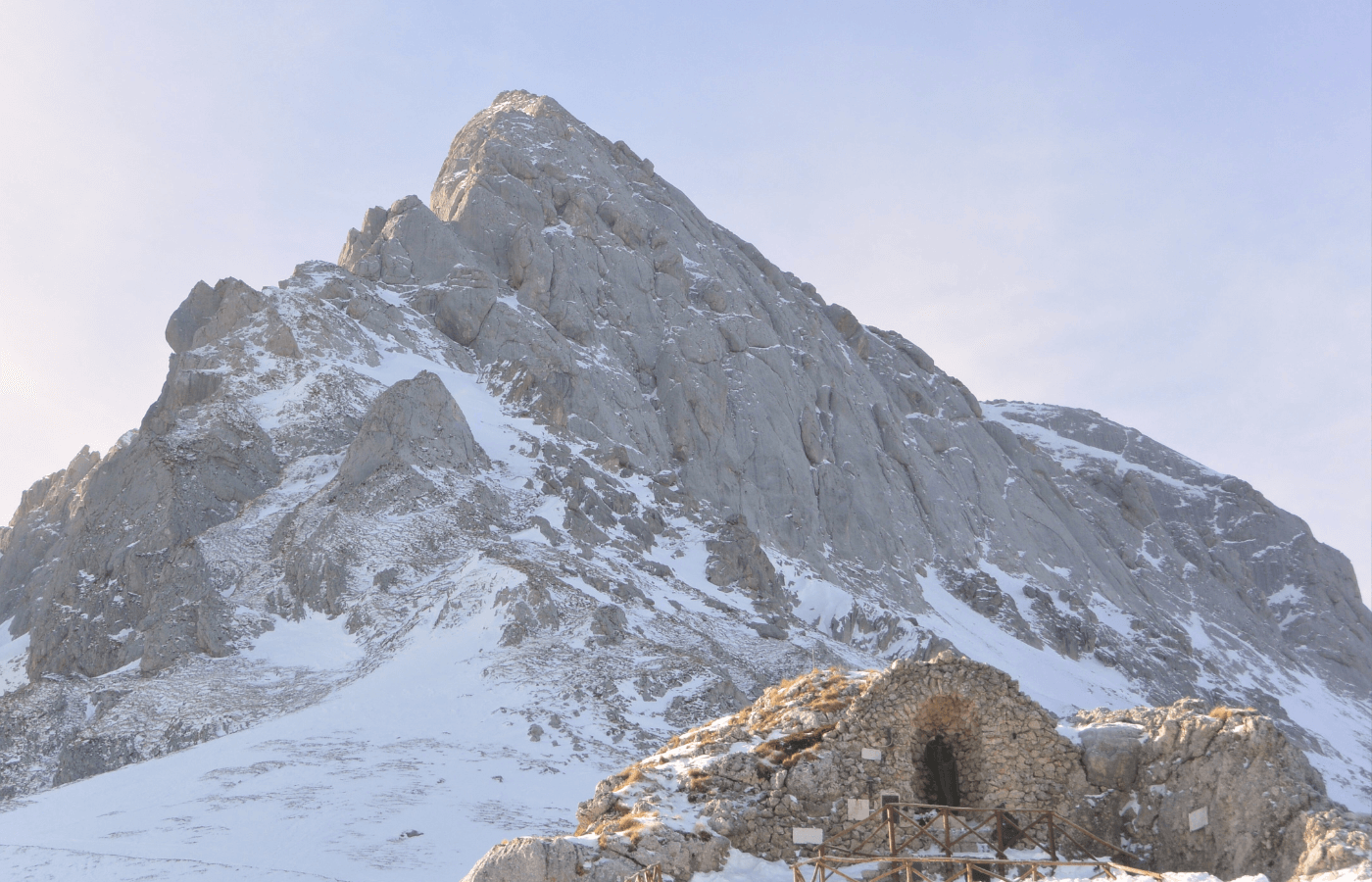
12 Most Beautiful Rifugi in Abruzzo
Here are some of the most breathtaking rifugi to visit in Abruzzo, chosen for their views, atmosphere, and unique positioning in the mountains.
1. Rifugio Carlo Franchetti (Gran Sasso)
Perched on the edge of the mountain in the Gran Sasso range, Rifugio Carlo Franchetti is one of the most famous and unforgettable rifugi in Abruzzo. Accessible via the Sentiero Madonnina trail (after a lift ride from Prati di Tivo), the hike isn’t too difficult but rewards you with 10/10 views of jagged peaks and valleys below.
Inside, you’ll find a warm mountain atmosphere with hearty food (don’t miss the polenta con cinghiale) and friendly, passionate staff. Reviewers rave that “even the toilet has the best view ever.” Stay overnight if you can—it’s one of the coolest places in Abruzzo to watch the sun set and rise from high above the world.
📍 AllTrails trail information.
2. Rifugio Duca degli Abruzzi (Monte Portella)
At 2,388 meters, this rifugio sits on the crest of Monte Portella, right in the heart of the Gran Sasso e Monti della Laga National Park. The views here are unbeatable, stretching across the massif to Corno Grande, the highest peak in the Apennines.
Getting here is part of the adventure: you can reach it in just 40 minutes from Campo Imperatore (after taking the cable car up) or on a longer 4-hour crossing from Prati di Tivo. However, reaching Campo Imperatore is also manageable by car.
Inside, it’s simple but welcoming, with good food, bunk-style dorms, and the lively company of hikers and climbers. Guests describe a convivial atmosphere—music drifting from the kitchen, polenta on the terrace, and sunsets that turn the peaks golden.
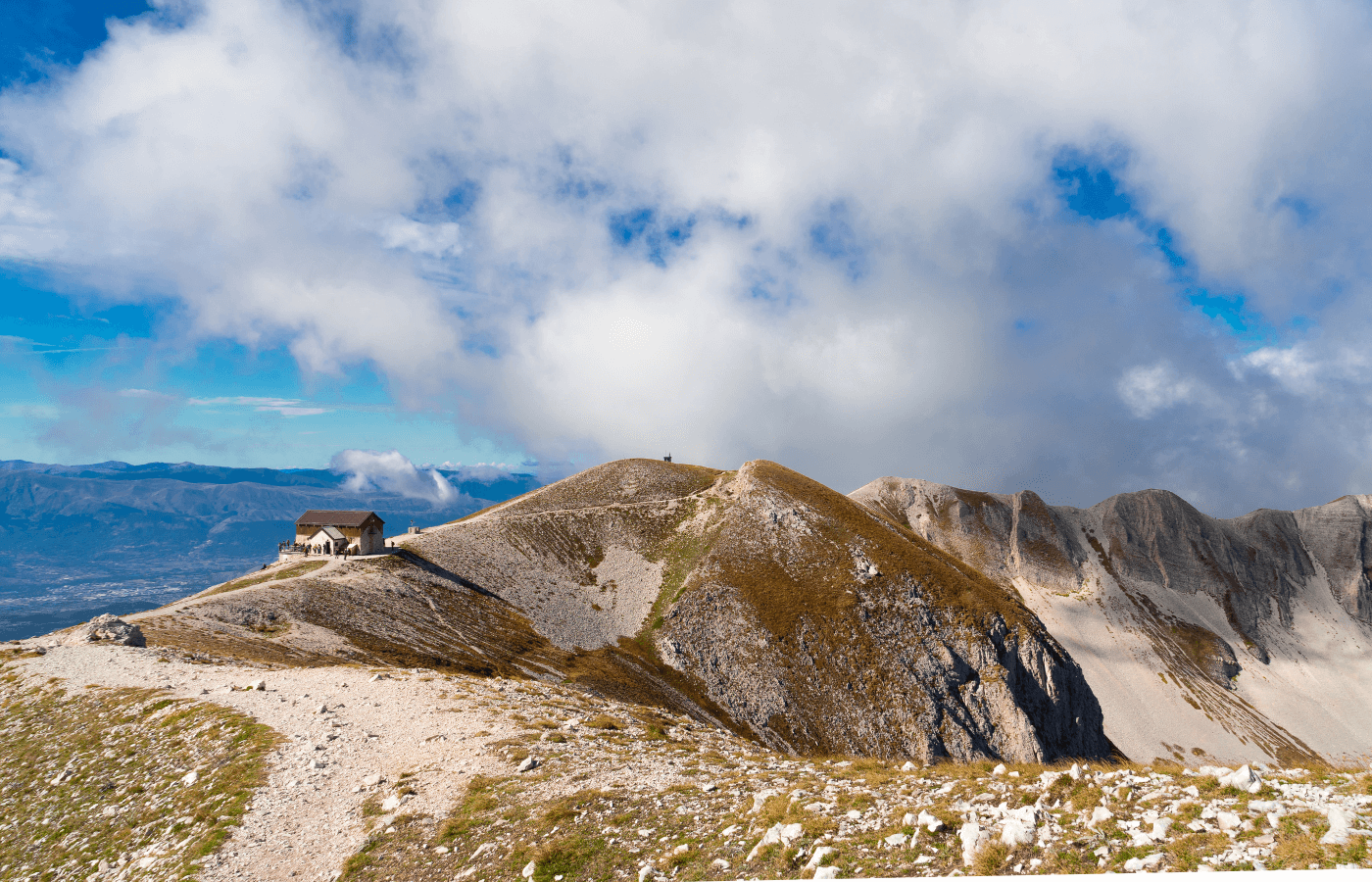
3. Rifugio Montecristo (Campo Imperatore)
Set against the backdrop of Campo Imperatore, Rifugio Montecristo combines rustic mountain charm with some of the best traditional Abruzzese food you’ll find at this altitude.
Guests rave about the warm hospitality, delicious local specialties like arrosticini and tiramisù (a national crowd-pleaser), and the incredible views of the surrounding valleys. Whether you stop in for Sunday lunch after a hike or stay overnight for sunset and sunrise, this rifugio makes you feel like part of the family.
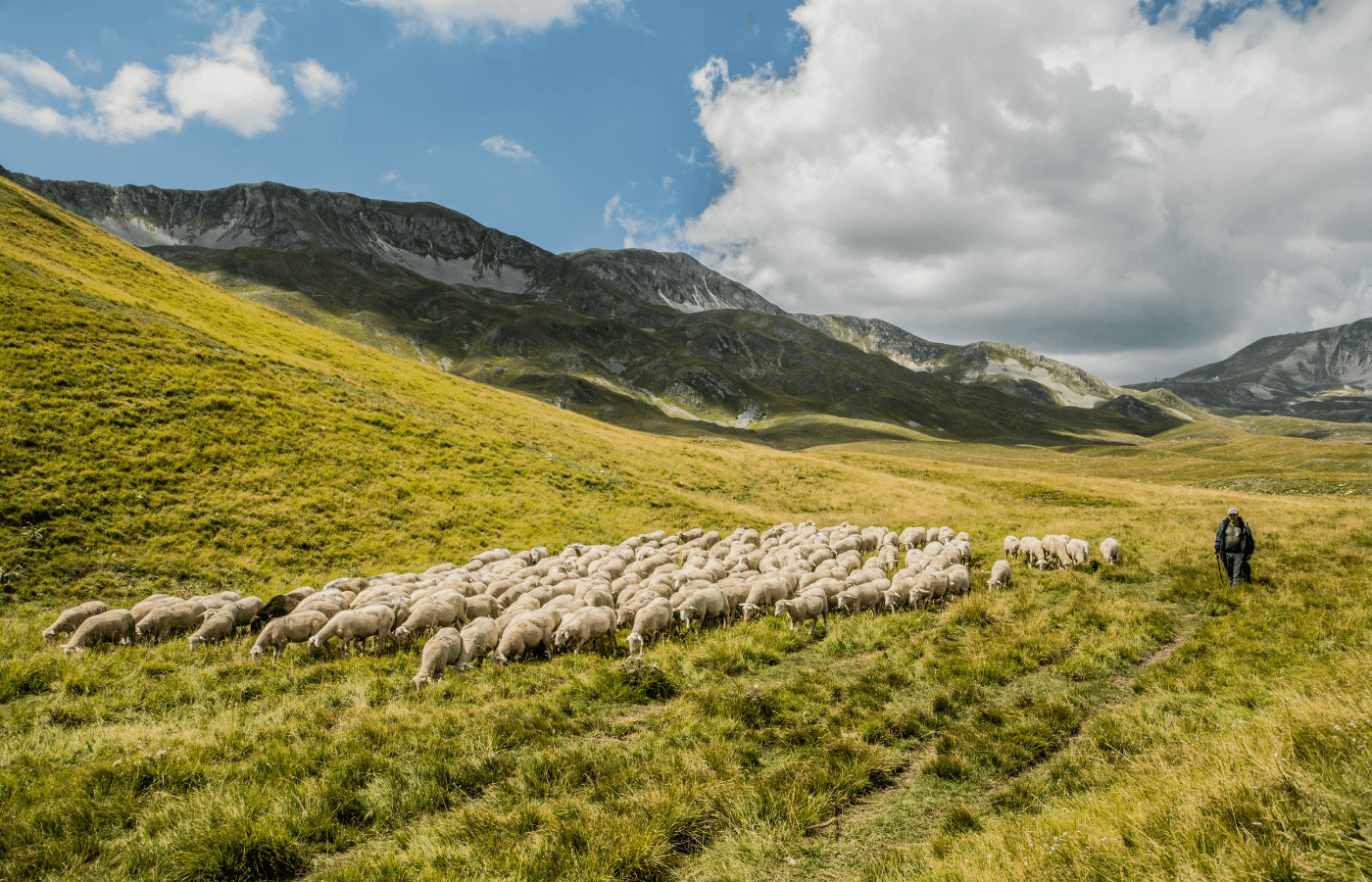
4. Rifugio Domenico Fioretti (Monte Corvo)
If you’re looking for something simple, authentic, and unforgettable, Rifugio Domenico Fioretti is a gem. Nestled below Monte Corvo, this rustic refuge is known for its incredible hospitality—Domenico, the host, welcomes hikers like family and serves up traditional dishes made with love.
The road access is limited, so you’ll finish your journey on foot, but the reward is an atmosphere that guests describe as “unforgettable” and “worth visiting at least once in your life.” It’s the kind of place where strangers become friends around a communal meal.
5. Rifugio Cima Alta (Prati di Tivo)
Perfect for families and first-time refuge-goers, Rifugio Cima Alta offers a fairytale atmosphere in the woods of Prati di Tivo. Visitors describe evenings of fog rolling in, warm welcomes with aperitivi, rustic dinners, and shared dorms that feel like a sleepover adventure.
It’s not luxurious—showers are outdoors and the space is communal—but that’s the charm. If you’re looking for a cozy, social mountain experience where kids, hikers, and locals all mix together, Cima Alta delivers.
6. Rifugio 2027 Chalet Montefreddo (Ovindoli)
One of the most vibrant rifugi in Abruzzo, Chalet Montefreddo combines panoramic ski-resort views with a lively atmosphere. At 2,027 meters, it’s a hub for skiers and hikers, with hearty sandwiches, Abruzzese platters, and music in the background.
It’s popular (expect crowds at lunchtime) but guests rave about delicious food, the staff friendly, and the energy contagious. Sit outside on a sunny day with a glass of wine, and you’ll understand why people call this refuge one of the best in Ovindoli.
7. Rifugio Terraegna (Parco Nazionale d’Abruzzo)
For something wilder and more remote, head to Rifugio Terraegna, tucked deep into the Abruzzo National Park. Reached via a few hours of hiking, this refuge offers simple but comfortable accommodations, a wood fire in winter, and the chance to truly disconnect.
Guests report sightings of wolves, bears, and chamois nearby—and the starlit skies are unforgettable. Dinner is hearty and often homemade, and the young hosts create a welcoming, almost magical atmosphere. If you want to experience Abruzzo at its wildest, Terraegna is the place.
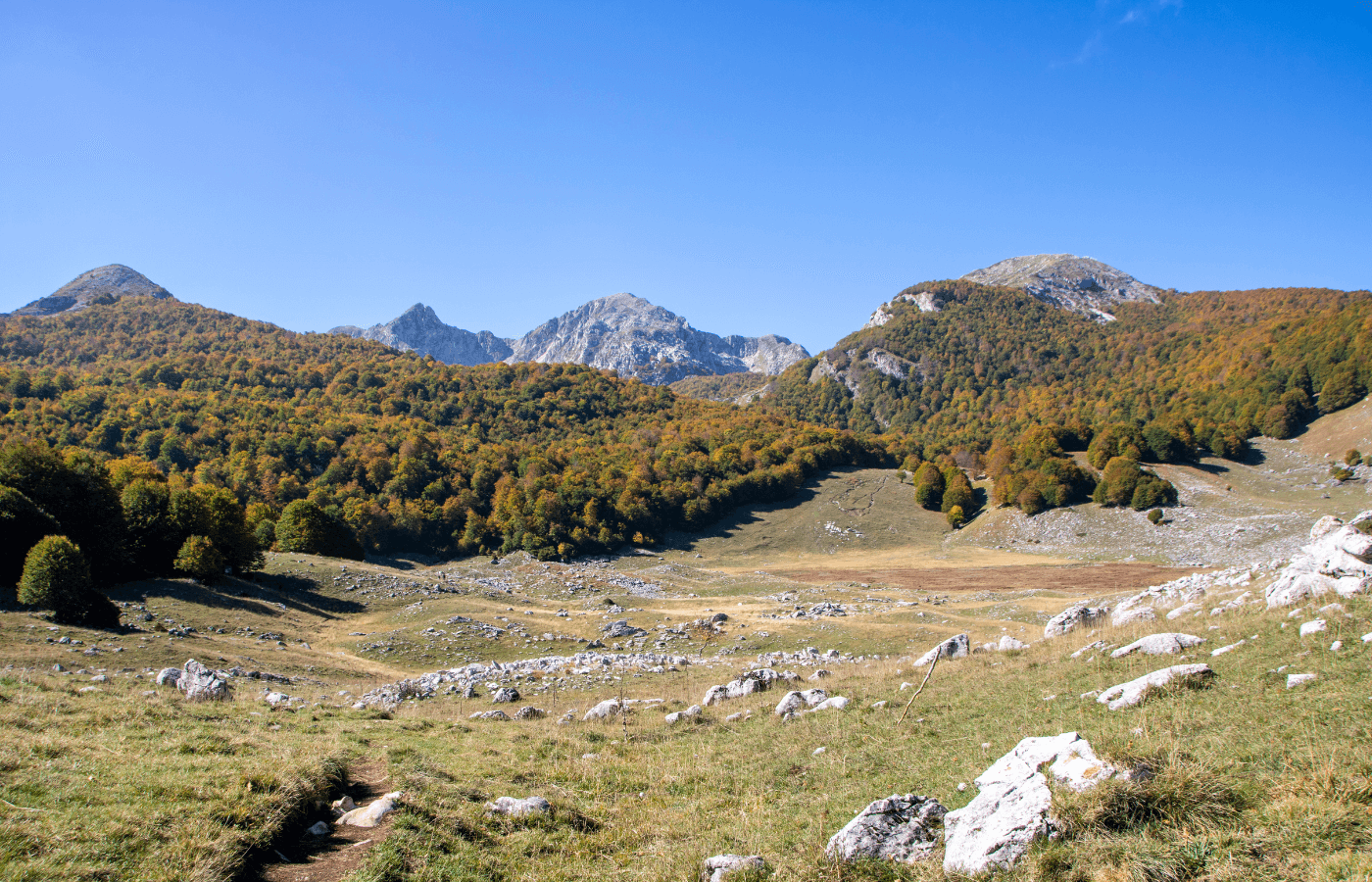
8. Rifugio della Cicerana (Marsican Bear Country)
Perhaps the most atmospheric rifugio in Abruzzo, Rifugio della Cicerana sits in the Abruzzo National Park, surrounded by forests known for Marsican brown bears. The refuge offers simple accommodation, great local food, and a base for excursions like bear-watching or stargazing nights.
Visitors call it one of the most beautiful places they’ve ever stayed, with “an atmosphere you’ll always cherish.” It’s welcoming, affordable, and perfect for those who want to feel close to nature and Abruzzo’s wild side.
9. Bivouac Carlo Fusco (Monte Amaro)
Perched on the slopes of Monte Amaro, the second-highest peak in the Apennines, Bivouac Carlo Fusco is a small but mighty shelter that rewards determined hikers with jaw-dropping views of the Murelle amphitheater. Recently renovated in 2019, the bright yellow bivouac sleeps six on simple bunk beds and includes a ventilated anteroom for storing gear or cooking, keeping the main space warm and protected.
Reaching it is no small feat—the trail from Rifugio Pomilio takes about four hours and involves steep, sometimes slippery ascents, so it’s best suited for seasoned trekkers.
Many hikers use Fusco as a staging point to split the long climb to Monte Amaro over two days. Inside, it’s minimal but functional, and stepping outside at dawn to see chamois grazing in the valley below is an experience you won’t forget.
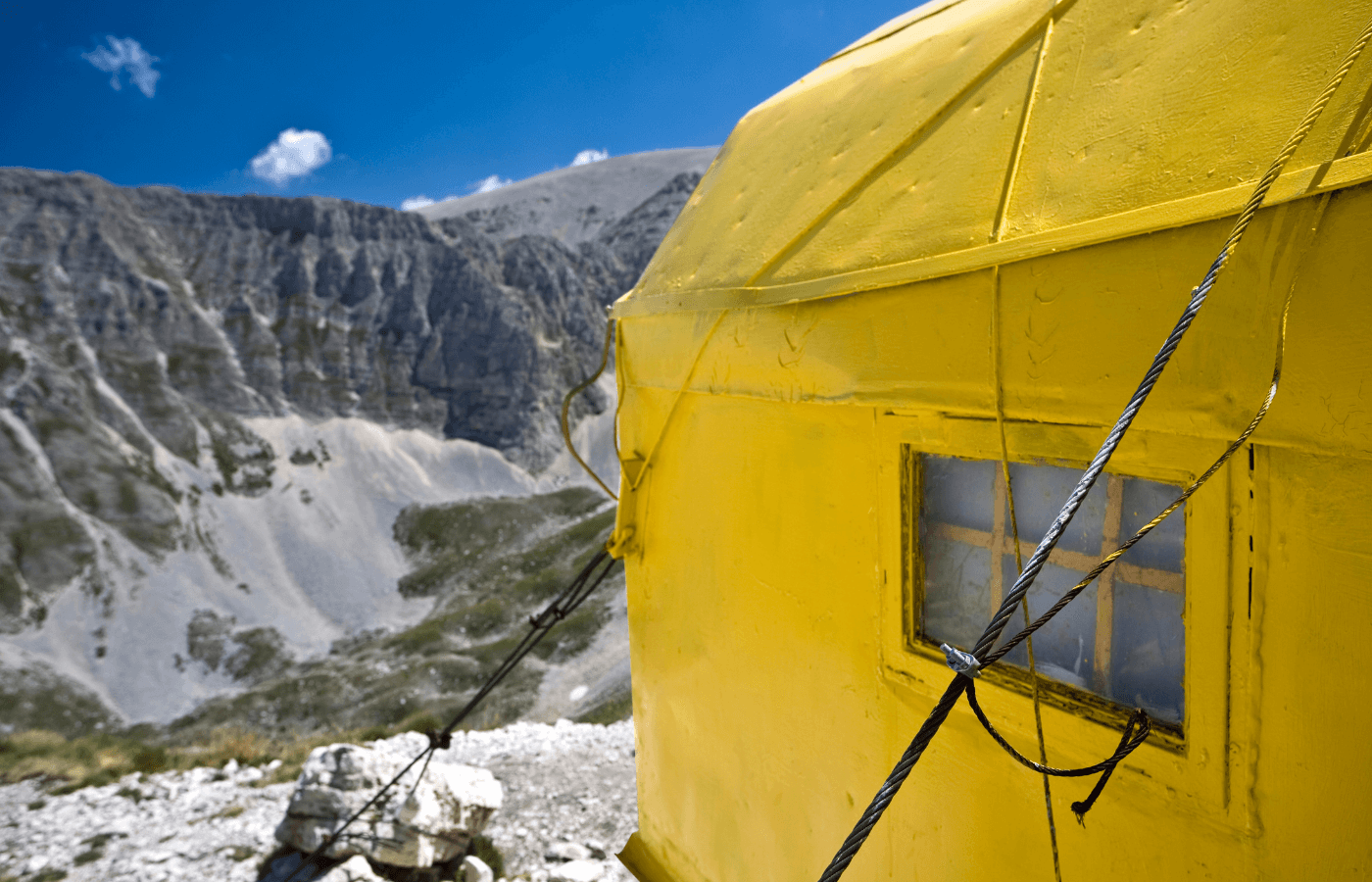
10. Otium – Casa degli Escursionisti (Castrovalva)
Set above the Sagittario Valley, Otium is a welcoming hiker’s refuge that combines simplicity with comfort. With space for 12 guests across three rooms, it features warm, wabi-sabi inspired interiors, reclaimed furnishings, and a communal kitchen stocked with local, organic ingredients.
Terraces and gardens frame stunning views of Castrovalva and the surrounding peaks, offering quiet nooks for reading, relaxing, or sharing meals outdoors. Dog-friendly and intentionally screen-free, Otium is a thoughtful base for exploring Abruzzo’s trails while embracing a slower pace of mountain life.
11. Rifugio Fonte Tarì (Lama dei Peligni)
Rifugio Fonte Tarì sits in the heart of Majella National Park, offering hikers a cozy and well-maintained base surrounded by pristine nature. Accessible via a 2–2.5 hour walk from Lama dei Peligni, the refuge features 17 beds in simple wooden dorms, a fully equipped kitchen, and an outdoor dining area with fresh spring water nearby.
Guests adore the panoramic views, peaceful setting, and the sense of accomplishment that comes with reaching the refuge. Ideal for solo adventurers or groups, Fonte Tarì combines practicality with the raw beauty of the Majella mountains, making it a rewarding stop on any hiking itinerary.
12. Rifugio Pischioli (Pennapiedimonte)
Carved into a natural rock crevice just above 1,100 meters, Rifugio Pischioli offers hikers a cozy, historic-feeling retreat with a fireplace and grilling options. Accessible via a scenic uphill path from Balzolo (about an hour), the refuge provides a stunning panorama of Casoli, the surrounding mountains, and the Majella’s heart.
With a “take some, leave some” philosophy for supplies, Pischioli combines charm, practicality, and a memorable alpine atmosphere for a rewarding stop on your hike.
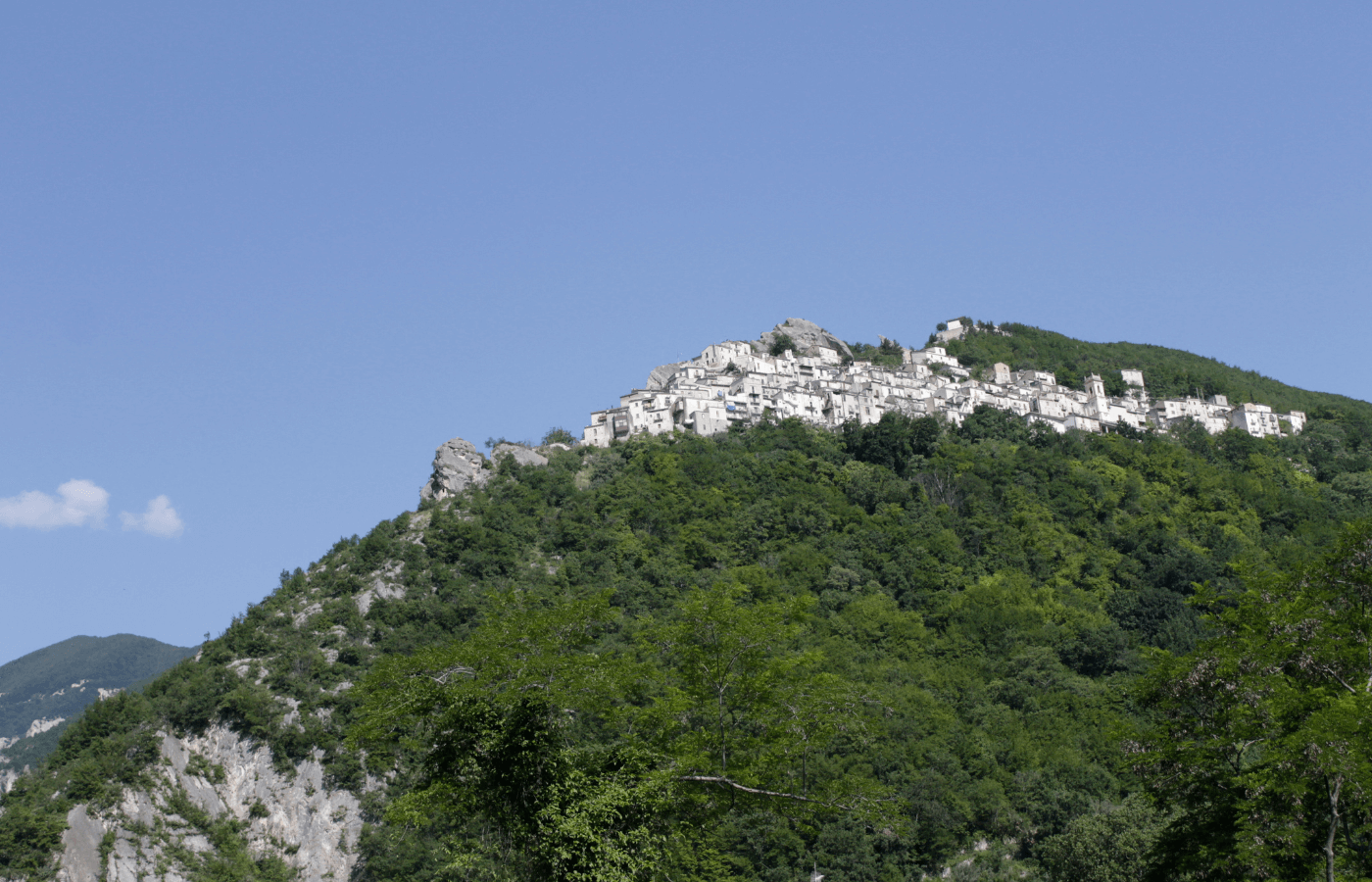
Practical Tips for Visiting Rifugi Mountain Huts in Abruzzo
- Best Season: Most rifugi are open from late spring to early autumn (June–September). Winter access can be limited.
- Gear: Good hiking boots, a light sleeping bag or liner, and cash for meals (many huts don’t take cards).
- Reservations: Especially in summer weekends, call ahead or check websites to book.
- Food: Don’t miss the chance to try local mountain dishes like polenta, arrosticini, or hearty soups.
- Etiquette: Remember, these are communal spaces—respect quiet hours, tidy up, and greet fellow hikers with a friendly “ciao!” at the very least (if you don’t speak Italian)
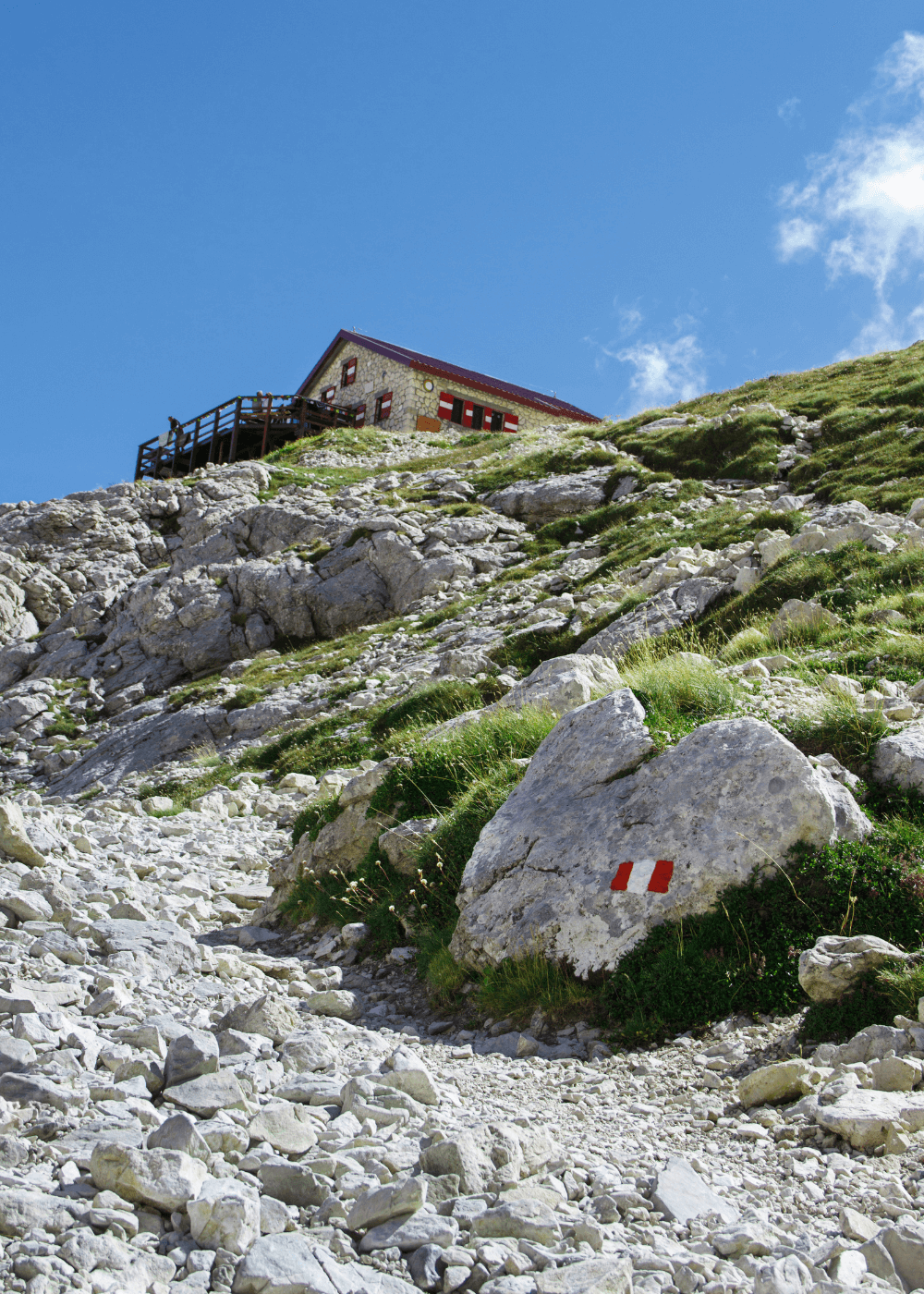
FAQs Visiting Rifugi in Abruzzo
What is a rifugio in Italy?
Rifugi (plural of rifugio) are mountain huts or lodges in Abruzzo, often accessible only by hiking or biking. They provide shelter, meals, and sometimes overnight accommodation for hikers and outdoor enthusiasts. Some, like Otium or Carlo Franchetti, are staffed and offer full services, while others, like Bivouac Carlo Fusco or Rifugio Pischioli, are more basic.
Do you need to book in advance?
Yes—staffed rifugi and popular locations like Carlo Franchetti, Duca degli Abruzzi, or Fonte Tarì often require reservations, especially in summer. Smaller huts and bivouacs may operate on a first-come, first-served basis, but checking ahead is always safest.
Can you stay overnight in rifugi in Abruzzo?
Many rifugi offer dorm-style accommodation with shared bathrooms. Some are unattended bivouacs with minimal facilities (bunks and shelter from the elements), while others are fully staffed and serve meals, like Rifugio Montecristo or Otium.
Are rifugi in Abruzzo family-friendly?
Yes—some, like Rifugio Cima Alta or Chalet Montefreddo, welcome families with children. Others, such as Bivouac Carlo Fusco or Rifugio Terraegna, are better suited for experienced hikers seeking wilderness experiences.
What’s the difference between a rifugio and a bivacco?
A rifugio is staffed and usually serves food and drink. A bivacco is an unattended shelter, often free, with very basic facilities—bunks and protection from the elements. For example, Bivouac Carlo Fusco is a small bivacco with six beds, while Rifugio Carlo Franchetti is a fully serviced mountain hut.
What’s the most beautiful rifugio in Abruzzo?
It’s hard to pick! Rifugio Carlo Franchetti offers iconic mountain views, Rifugio della Cicerana immerses you in wildlife-rich forests, Bivouac Carlo Fusco rewards determined hikers with dramatic panoramas, and Rifugio Terraegna is perfect for those seeking solitude in the wilderness.
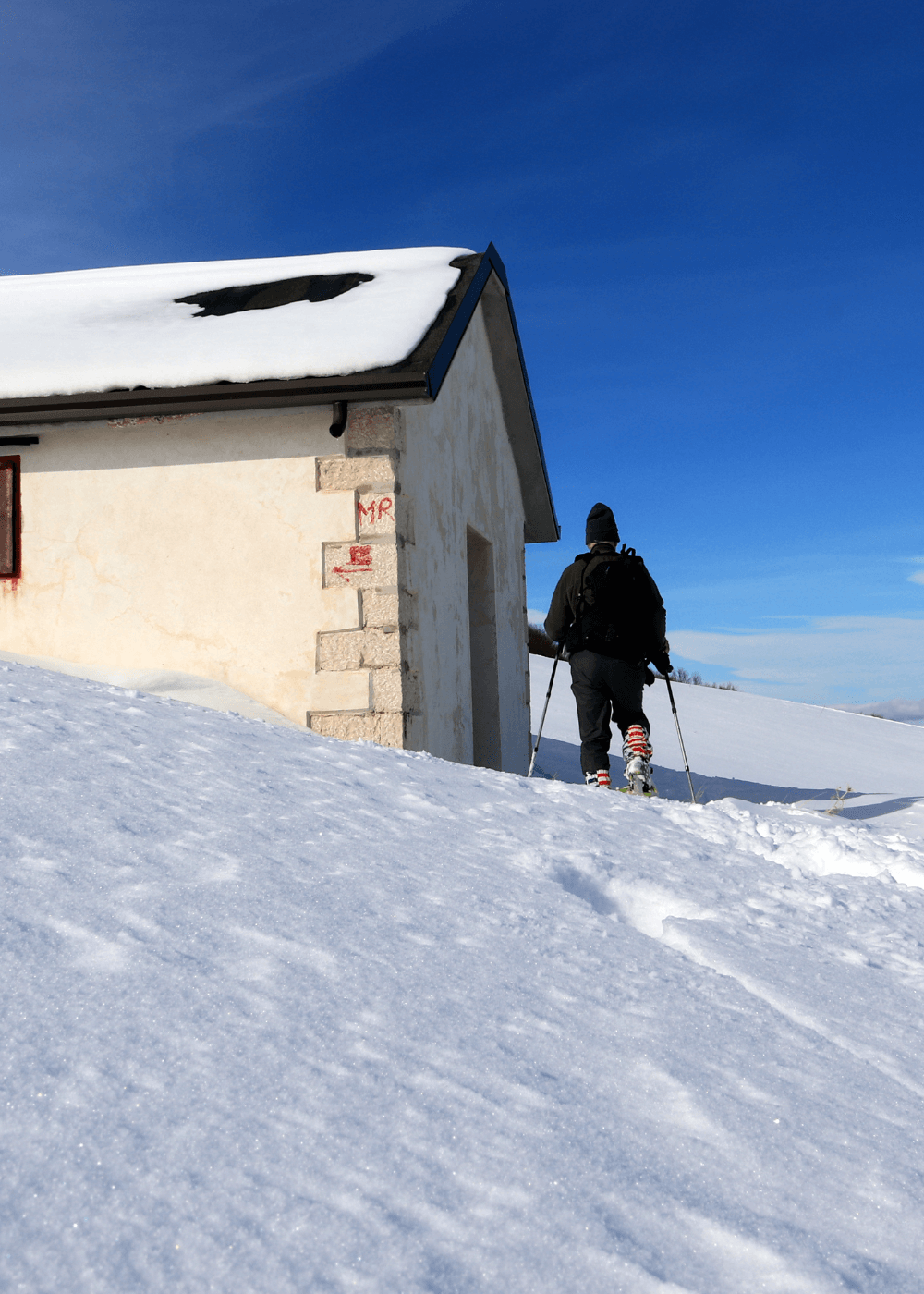
Final Thoughts
Exploring the most beautiful rifugi in Abruzzo is more than just a hiking trip—it’s about connecting with Italy’s wild heart. These huts give you access to breathtaking landscapes, hearty mountain cuisine, and unforgettable experiences under the stars.
Whether you’re a seasoned hiker or new to mountain life, Abruzzo’s rifugi invite you to slow down, share stories with fellow travelers, and fall in love with one of Italy’s most underrated regions.
So grab your boots, pack light, and get ready—the mountains of Abruzzo are waiting.

